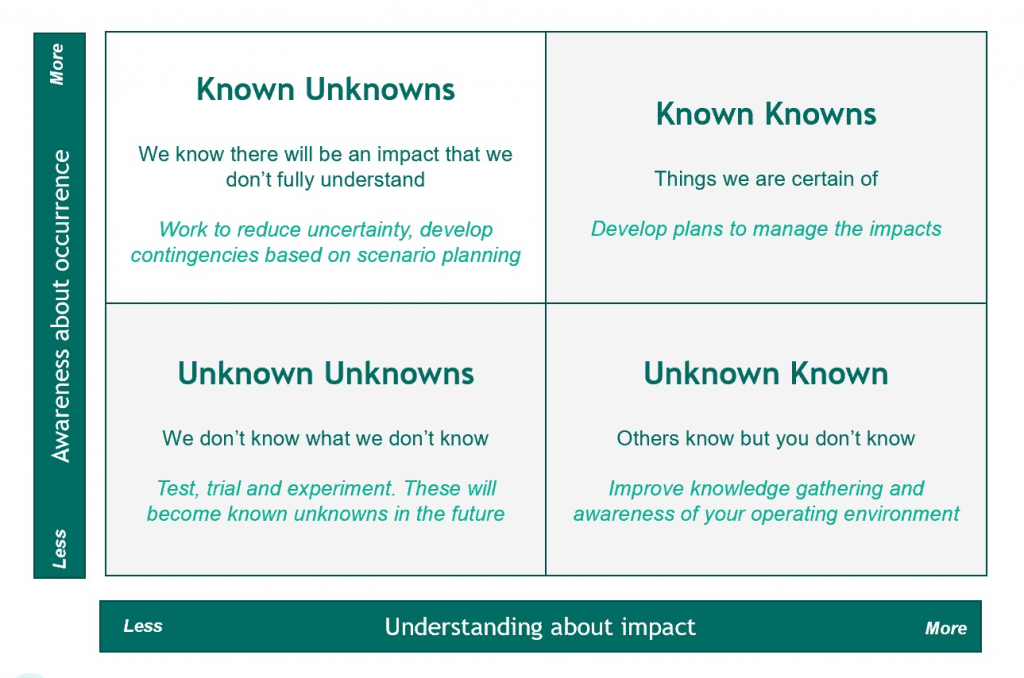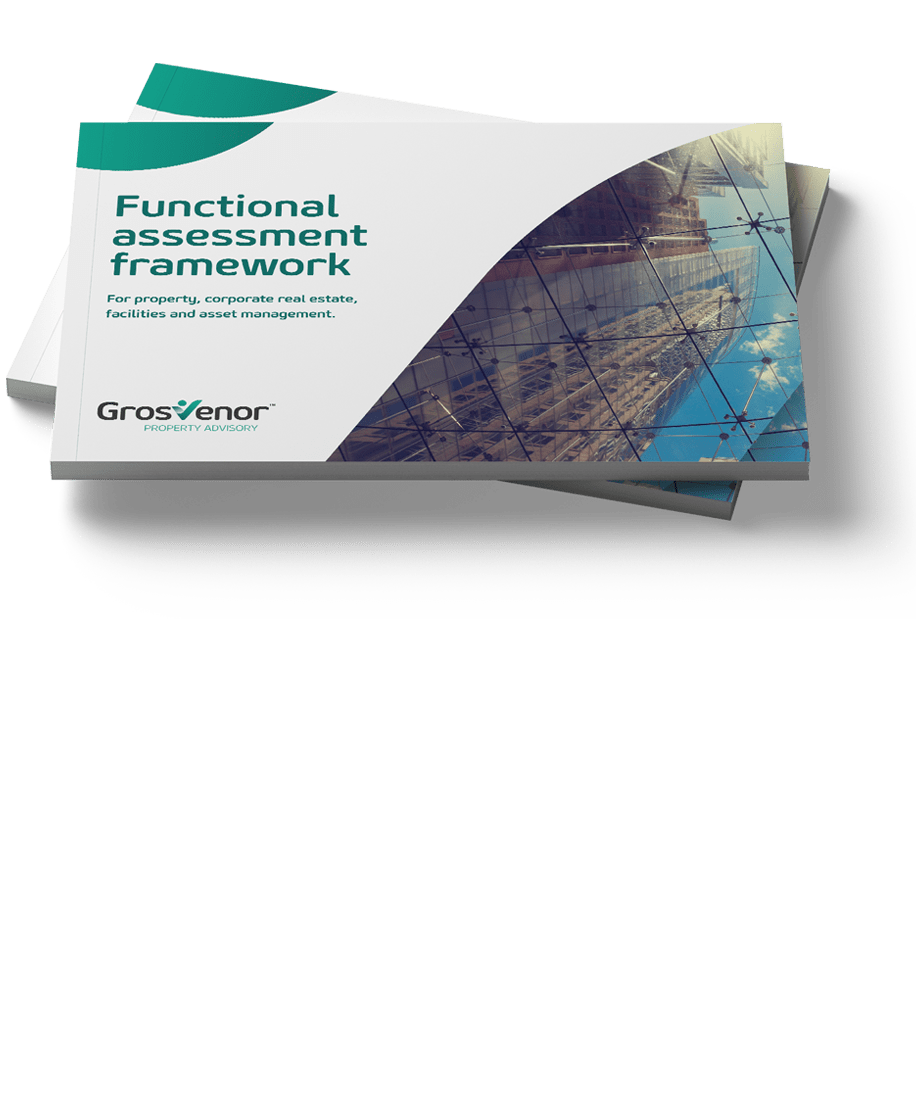The Post-COVID Workplace – Who Knows?

I have heard a lot of people speculating on what the knowledge-based workplace will look like post-COVID. In reality, I don’t think anyone knows.
We don’t yet fully understand the virus, how it’s transmitted, how long we will need to isolate for or, the long term health impacts. Once we know more about the virus, we can then start thinking about the effects on the people and from there, we can start to think about the future of the workplace. There is just too much uncertainty to reliably predict the full impact on our traditional ideas of the workplace.
That’s not to say we shouldn’t start thinking about it, because we should. To help, we have set out a way to help your organisation start thinking about the future of the workplace.
What you do know and what you don’t know.
When working with uncertainty it’s important to consider what you know and what you don’t know. A good tool for the current level of uncertainty is the awareness and understanding matrix below.

Where we are now is in the Known Unknowns. We have a good awareness that there will be an impact but don’t have enough understanding of the nature of the impact to determine the best course of action (Apologies to Donald Rumsfeld).
What should we do now?
The first thing to do is to admit you don’t have all the answers. People crave certainty and managers even more so but don’t let it drive your thinking.
The second thing is to list all the things you don’t currently know and, if possible, the range of possible outcomes that might occur. For example, we don’t know when we will be able to reoccupy XYZ building but it could be between 2 and 12 months; we don’t know how many people will be comfortable returning to the office but it could be between 30 and 90%.
The third action is to undertake research to reduce the level of uncertainty and develop contingency plans based on the range of possible scenarios.
Context is everything.
What works for one organisation will not necessarily work for another. The size, spread and the culture of your workforce, the way you deliver services and the ICT environment you use will all impact how your organisation’s workplace should respond.
By establishing a process to reduce uncertainty, to plan and test a range of scenarios, you will be better placed to develop a workplace response. You will also avoid the risks associated with predicting a future that for all of us, remains unclear.









 We are all about sharing our expertise to help you and your organisation be the best it can be.
We are all about sharing our expertise to help you and your organisation be the best it can be.